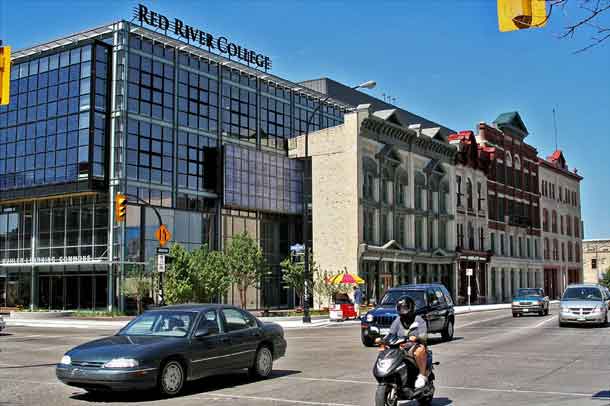Manitoba’s Red River College’s Smart Factory offers a solution by bringing students and industry together
By Daniel Komesch
Senior policy analyst
Polytechnics Canada
WINNIPEG – Automation has become a scary word. As new technologies proliferate, unease and uncertainty surround the labour market of the future.
Will jobs be destroyed? Created? Can a robot really replace what I do? What kind of career should my child pursue if we don’t know what the jobs of the future will look like? How can I retrain?
If new studies are to be believed, nearly half of the Canadian labour force is at high risk of automation in the next 10 to 20 years. But what does that really mean for today’s – and tomorrow’s – workers?
The reshaping of economies due to innovations in technology is a challenge that has persisted across time – economist Joseph Schumpeter considered it to be the essential fact about capitalism: technologies emerge and economies are forced to transition.
In the face of a transitioning economy, we only have one choice: embrace and adapt. So, looking ahead to an automated future, where should Canada concentrate its educational energies?
The solution should be co-operational – which means tapping all of Canada’s resources as we adapt to the needs of the future. So politicians and policy-makers would be wise to look beyond the usual players.
One of the avenues forward includes embracing educational institutions that are already used to working hand-in-hand with industry – which means they’re already accustomed to perpetual innovation.
I’m talking about polytechnics. Polytechnics are publicly-funded colleges and institutes of technology that offer a full suite of credentials, including four-year bachelor’s degrees and apprenticeships, while also offering industry a range of research and development, and innovation services. Programs are skills-intensive and technology-based, encompassing hands-on and experiential learning.
Polytechnics already have tight connections to Canadian industry, built through their innovation services and advisory groups made up of industry representatives. So they tend to know where labour markets are headed, and care about the skills necessary for the jobs of today and tomorrow.
Take manufacturing, for example. To stay competitive, businesses demand advanced technologies – including the use of automation and industrial robots. The field is quickly shifting away from coveralls in favour of computer screens.
To keep pace and ensure that Canadian manufactures have the talent they need to compete, and access to cutting-edge research, Red River College (a member of Polytechnics Canada) brings students and industry together in a number of facilities.
The college’s automation lab focuses on the use of sensors, actuators and programmable logic controllers to improve production processes. Students in the Mechanical Engineering Technology Diploma program train alongside Toyota employees from Japan. All will eventually use this same equipment.
In August, new funds were announced by federal Innovation, Science, and Economic Development Minister Navdeep Bains for the Smart Factory – a networked lab that will train students in robotic automation, digital inspection, and the use of autonomous factory vehicles.
Putting students in living labs alongside employers is how innovation and job growth happens.
Yet polytechnics are often neglected by policy-makers. Their sister-institutions, universities, get the policy limelight. But as many as 30 per cent of students attending a polytechnic have previously attended university. That number is on the rise.
Why? Polytechnics are particularly good at a key component: connecting the supply and demand sides of the labour market. This is especially valuable as new technologies emerge that require the adoption of new skill sets.
If the essential fact about capitalism is creative destruction and the necessary reshaping of economies, then governments need to see polytechnics as the economic actors they are and bring them into the innovation policy discussion.
Polytechnics adapt, embrace, and thrive in the face of economic challenge and change. Canada is on the verge of becoming an automation nation and polytechnics say, “Bring it on.”
If we are to harness all the talent we have, it’s time Canada’s policy-makers recognized the importance of polytechnics among the educational opportunities available to Canadians.
Daniel Komesch is a senior policy analyst with Polytechnics Canada.
© 2017 Distributed by Troy Media
The views, opinions and positions expressed by all columnists and contributors are the author’s alone. They do not inherently or expressly reflect the views, opinions and/or positions of NetNewsLedger.





